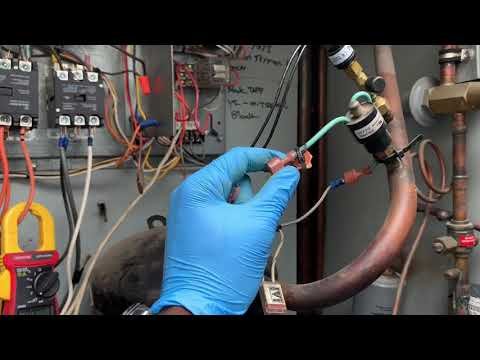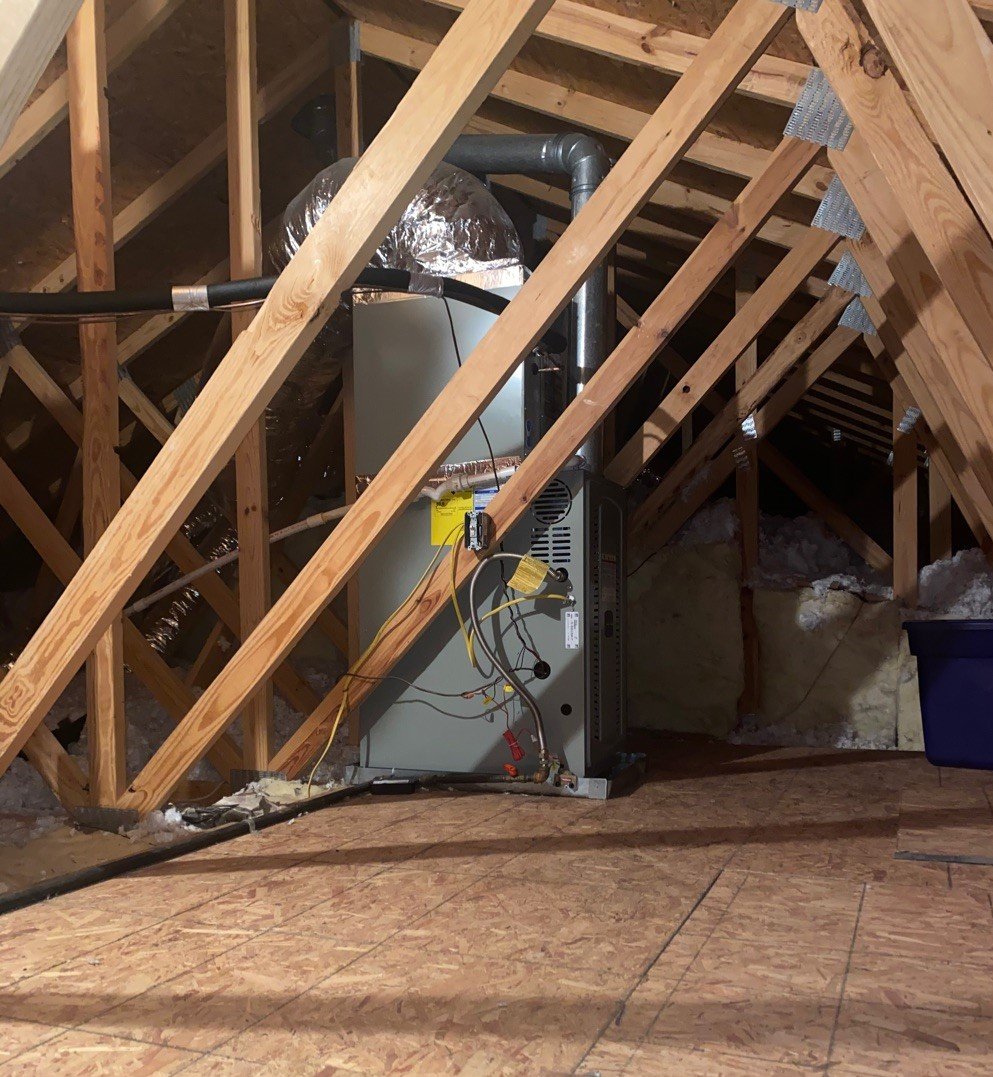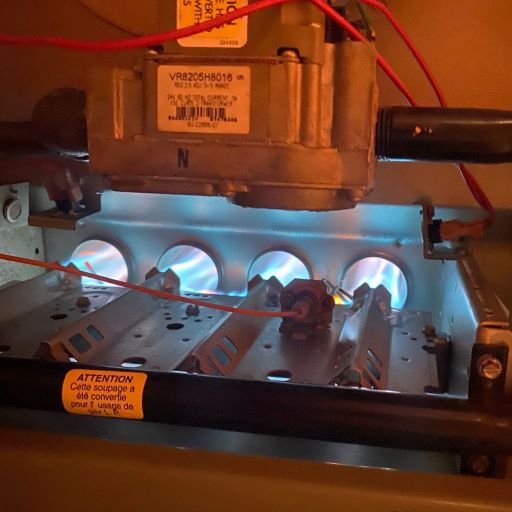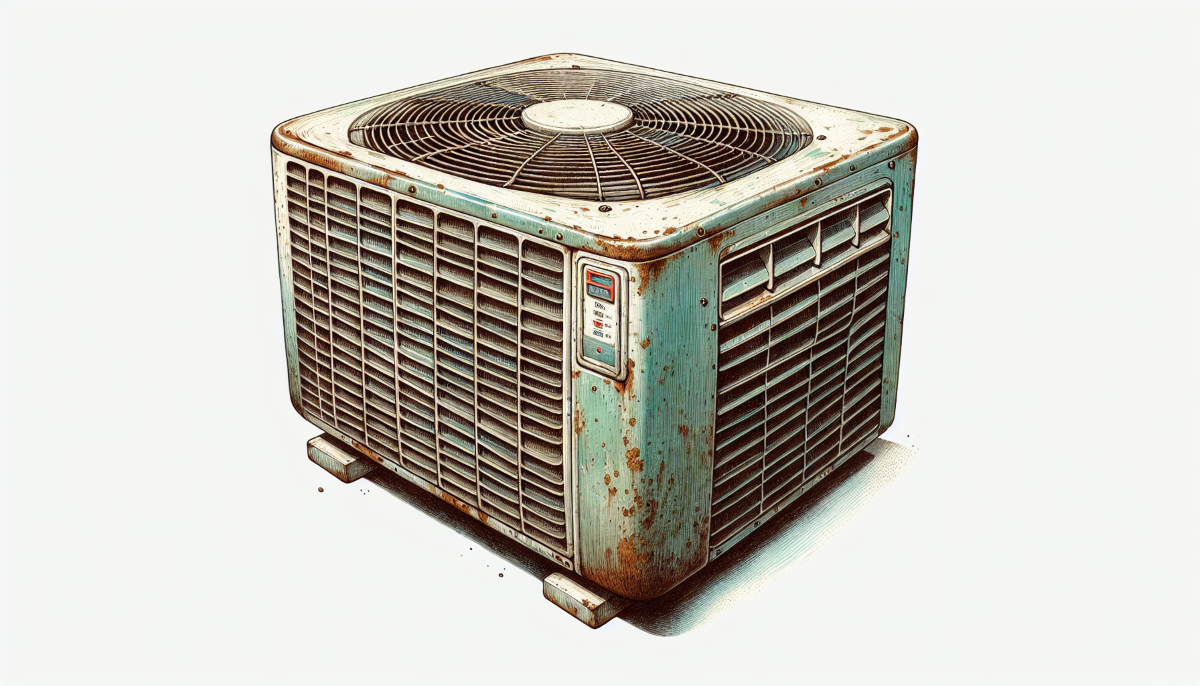Cost to Replace AC Pressure Switch
Need to know the cost to replace an AC pressure switch? This essential piece of your AC unit can generally be replaced for a sum that falls between $150 and $400. In this guide, we’ll explore what’s behind these numbers, including labor and parts, and potential factors that could affect the final bill. Whether you go the DIY route or seek professional help, we’ll arm you with the necessary insight to make an informed decision on your cost to replace AC pressure switch replacement.
Key Takeaways
The cost of replacing an AC pressure switch varies widely, typically ranging from $150 to $650, with factors such as unit size, brand, coil type, and connection method influencing the price; financing options may be available through repair services.
AC pressure switches are vital for the efficient functioning of an HVAC system as they regulate refrigerant pressure to protect the system from pressure-related issues, with low and high-pressure switches serving to shut down the system under dangerous pressure levels.
Symptoms of a failing AC pressure switch include inconsistent cooling, frequent compressor cycling, or refrigerant leaks, suggesting the need for prompt professional assessment and replacement to prevent further damage or loss of efficiency.
Quick Links:
AC Pressure Switch Replacement Costs
The cost of replacing an AC pressure switch tends to fluctuate. Generally, AC repair costs can vary from $150 to $650, contingent on the repair’s intricacy. Some replacements, such as AC pressure switches, might be included in the warranty offered by AC repair services. If the cost appears intimidating, remember that many AC repair services provide financing alternatives for substantial repairs.
The cost of replacing an AC pressure switch can vary depending on several factors, including:
The size of your unit
The brand
The type of coil it uses
The connection method of the switch
These factors can all influence the overall cost of the switch replacement.
Threaded vs. Brazed AC Pressure Switch
The overall cost of an AC pressure switch is significantly influenced by its connection method. These switches mainly come in two varieties: threaded and brazed. A threaded AC pressure switch generally takes about an hour to replace, influencing the labor cost and total time needed for service. This makes them relatively cheaper and quicker to replace.
On the other hand, replacing a brazed AC pressure switch can take up to 3 hours, including:
setup
replacement
cleanup
testing
This means higher labor costs and a more extended service duration. So, if your AC uses a brazed pressure switch, brace yourself for a slightly heftier bill.
Additional Expenses
Like any repair or maintenance work, replacing an AC pressure switch might incur extra expenses. Labor cost for such a replacement usually falls between $50 and $150. Keep in mind that labor costs can fluctuate based on the job’s complexity and the technician’s expertise.
Aside from labor costs, if your AC pressure switch is brazed, you’ll need to account for additional materials like:
oxygen
acetylene
nitrogen
brazing material
These additional materials, such as an expansion valve, could incur extra costs. To avoid any unpleasant surprises, it’s always best to choose a service provider with transparent pricing. Request a detailed quote that includes all costs associated with the replacement, such as the pressure switch price, labor, and additional fees.
Average Cost Ranges
After considering the various costs involved, what’s the bottom line? The average cost for replacing an AC pressure switch, including installation, ranges from $150 to $400. The price for the part alone generally falls between $10 to $60.
If your AC pressure switch is still under warranty, you’re in luck. The cost for a replacement can range between $100 to $300. However, if your warranty has expired, be prepared to shell out anywhere from $200 to $700 for a replacement. Knowing these average cost ranges can help you budget for this important repair and avoid unexpected expenses.
The Importance of AC Pressure Switches
Despite their small size, AC pressure switches are integral to the efficient functioning of your HVAC system. They aid in maintaining the appropriate refrigerant pressure, subsequently protecting the system from pressure-related problems. Additionally, AC pressure switches contribute to the protection of the HVAC system’s compressor and other components, thus ensuring their longevity and reliability.
In essence, AC pressure switches serve as watchdogs for your AC system. They monitor the refrigerant pressure and act swiftly to protect the system if the pressure gets too low or too high. Let’s delve deeper into the role of low and high-pressure switches.
Low-Pressure Switch Function
The low-pressure switch is a critical safety device in HVAC systems. It keeps an eye on refrigerant pressure levels and springs into action when the pressure falls below a certain threshold. Located on the suction side of the compressor, the low-pressure switch typically activates to shut down the system when refrigerant pressure falls within a range of 20 to 30 psi, as prescribed by manufacturer specifications.
By cutting the power supply to the compressor when the refrigerant pressure drops too low, the low-pressure switch helps prevent potential damage from low refrigerant levels. Without this switch, the compressor could continue to run, leading to significant damage and a costly repair bill.
High-Pressure Switch Function
Just as the low-pressure switch watches for pressure levels that are too low, the high-pressure switch is on the lookout for pressure that’s too high. It monitors refrigerant pressure and shuts off the compressor if the pressure becomes excessively high, preventing potential damage.
High-pressure switches are typically located on the discharge side of the compressor. They activate to stop the compressor at pressure levels that can range from 200 to 400 psi, thus preventing component failure such as a burst hose. Situations that can lead to compressor failure and trigger high-pressure switches include blocked condenser coils or a malfunctioning fan, often caused by issues such as overcharging of the system or a condenser fan failure.
Signs Your AC Pressure Switch Needs Replacement
Now that you understand the importance of AC pressure switches, how can you tell if yours needs replacing? A faulty AC pressure switch can lead to decreased cooling efficiency and increased energy usage. These issues demand prompt attention to avoid more extensive repairs.
Signs of a defective low-pressure switch include observable issues such as the AC unit engaging in short-cycling, providing diminished cooling, or having a frozen evaporator coil. On the other hand, a failing high-pressure switch may cause the air conditioning to emit warm air, produce unusual noises from the compressor, or shut off abruptly. Let’s delve deeper into these signs.
Inconsistent Cooling
One of the most noticeable signs of a malfunctioning AC pressure switch is inconsistent cool air. A fully functional AC pressure switch is essential for consistent cooling as it controls the operation of the AC system.
If your AC pressure switch is malfunctioning, it may cause the AC system to:
Stay on or off incorrectly
Result in inconsistent operation
Cause temperature fluctuations
Blow warm air instead of cool.
So, if you notice that your home’s temperature is all over the place, it might be time to check your AC pressure switch.
Frequent Compressor Cycling
Another sign of a faulty AC pressure switch is frequent compressor cycling, a condition known as short cycling. In a normal scenario, your AC’s compressor should cycle on and off at regular intervals. However, if your AC pressure switch is malfunctioning, it can cause the compressor to cycle on and off more frequently than normal.
Short cycling not only leads to increased energy consumption but also causes excessive wear and tear on the system. Strange noises from the compressor, such as loud humming or clicking, may serve as indicators of a problem with the AC pressure switch that affects compressor cycling.
Refrigerant Leaks
Refrigerant leaks can be another telltale sign of a faulty AC pressure switch. The presence of a greasy type of oil on and around the AC pressure switch is a key indicator of a refrigerant leak.
Refrigerant leaks from the pressure switch can lead to cooling issues within the HVAC system. Addressing these leaks promptly is crucial to prevent reduced cooling efficiency and ensure the HVAC system operates correctly. So, if you spot an oily residue around your AC pressure switch, it’s time to call in a professional.
DIY vs. Professional AC Pressure Switch Replacement
In today’s DIY culture, you may consider replacing your AC pressure switch on your own. However, think about the potential hurdles and risks before proceeding. For instance, mishandling AC components can result in damage to sensitive parts like the condenser or the evaporator coil.
Even more concerning, DIY AC repairs can void equipment warranties, which often require professional maintenance as a condition for warranty coverage. DIY attempts may also lead to higher costs if multiple failed attempts necessitate eventual professional intervention.
DIY Challenges
The process of replacing an AC pressure switch can be complex and time-consuming, especially if your switch is brazed. This type of replacement requires the following steps:
System draining
Switch Removal
Brazing
Dryer bottle replacement
System recharging
Beyond the complexity of the task, attempting to repair or replace AC components without professional expertise can result in damaging sensitive parts and may lead to additional expenses. Furthermore, warranty conditions for AC units might exclude DIY repairs, creating a risk that the warranty could be voided if non-professional maintenance or replacements are performed.
Benefits of Hiring a Technician
On the flip side, hiring a professional technician for AC pressure switch replacement comes with a plethora of benefits. For one, technicians are equipped with the necessary training, leading tools, and expertise required for correctly replacing an AC pressure switch, thereby preventing any unintentional damage to the system.
Leveraging their knowledge, technicians can tackle complex AC problems efficiently, mitigating the risk of compounding errors that may result from incorrect DIY efforts. Moreover, a professional’s involvement in AC pressure switch replacement is often necessary to uphold the AC unit’s warranty, which safeguards against future costs.
Tips for Choosing an AC Pressure Switch Replacement Service
Selecting an AC pressure switch replacement service requires more than mere luck. Opt for a service provider with a confirmable physical address, dedicated customer service line, and proper wiring expertise to guarantee post-service assistance and responsibility.
There are several factors to consider when selecting a service for AC pressure switch replacement. Let’s dive into a few key points to help you make an informed decision.
Research and Compare
Thanks to digital connectivity, researching and comparing local technicians are now more convenient than ever. Utilize online platforms such as Angie’s List or HomeAdvisor to find and compare local technicians specialized in AC pressure switch replacement. Don’t just rely on a single source. Investigate local service providers’ online reviews and ratings to gauge their reputation for AC pressure switch replacement.
Leverage social media groups or local community forums to seek out personal recommendations. Even local appliance stores or home improvement centers can provide valuable insights into reputable HVAC technicians.
Check Certifications and Experience
When selecting a technician for AC pressure switch replacement, their certification and experience are two essential factors to consider. Always request proof of the HVAC technician’s certification and verify it with the state’s licensing department to confirm their qualifications for replacing AC pressure switches.
Look for technicians who are members of professional HVAC organizations, such as the Air Conditioning Contractors of America (ACCA), as this demonstrates a commitment to delivering quality service. For the best results, hire a technician who has substantial experience working with the particular brand and model of your HVAC system.
Ask for Recommendations
Finally, remember the impact of personal recommendations. Seek advice from local appliance stores, home improvement centers, or community members who have direct experience with the service. Personal recommendations can often yield insights that you won’t find online or in a brochure.
Remember, choosing a reliable service provider for AC pressure switch replacement is an investment in the longevity and efficiency of your HVAC system. It’s worth taking the time to research, compare, and make an informed decision.
Summary
Understanding the costs and considerations for AC pressure switch replacement can save you time, money, and stress. Whether you’re dealing with inconsistent cooling, frequent compressor cycling, or refrigerant leaks, recognizing the signs of a faulty AC pressure switch is the first step toward a solution.
While it may be tempting to tackle AC pressure switch replacement as a DIY project, the complexities and potential pitfalls suggest that it’s a job best left to professionals. So, do your research, compare services, and make an informed decision. After all, a little knowledge can go a long way in maintaining a cool and comfortable home.
Frequently Asked Questions
How long does an AC pressure switch last?
A pressure switch can last for several years or even decades with proper maintenance and usage. Regular maintenance is key to ensure it lasts a long time.
Do you have to remove the freon to replace the pressure switch?
No, you don't usually need to remove the refrigerant to replace a pressure switch, as they generally screw into Schraeder valves. This makes the process more straightforward and less time-consuming.
How do I know if my AC low-pressure switch is bad?
If your AC compressor doesn't turn on, or if it turns on and off quickly, or if your AC system blows warm air, it could indicate a faulty AC pressure switch. Watch out for these signs to determine if they need replacement.
What happens when the AC pressure switch goes bad?
When the AC pressure switch goes bad, it can cause the system to stay on when it should be off or vice versa, leading to a buildup of heat inside the unit, which will eventually blow into the room as warm air.
What factors influence the cost of replacing an AC pressure switch?
The cost of replacing an AC pressure switch is influenced by factors such as the unit size, brand, coil type, and whether the switch is threaded or brazed. These factors play a significant role in determining the overall cost.










